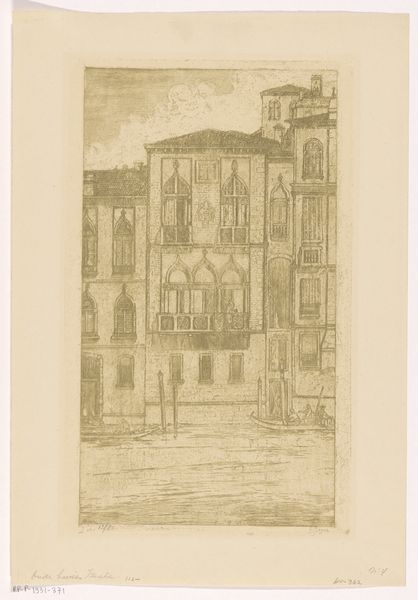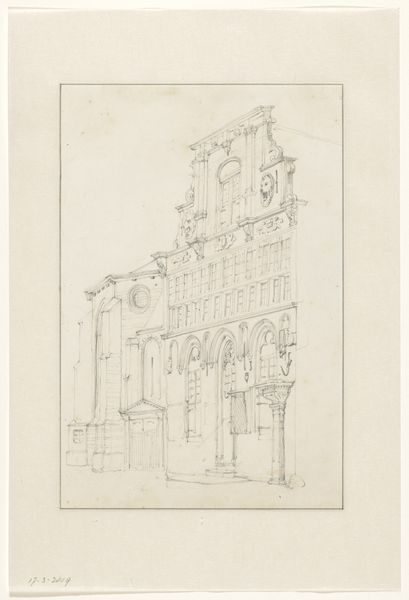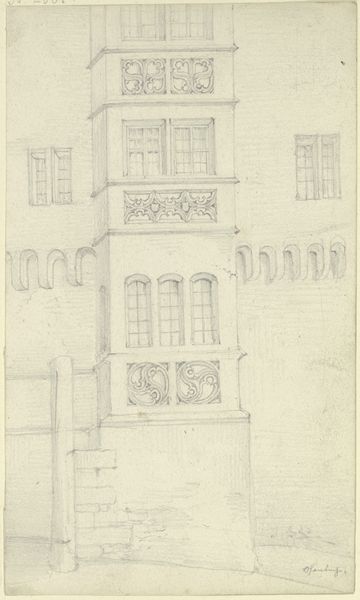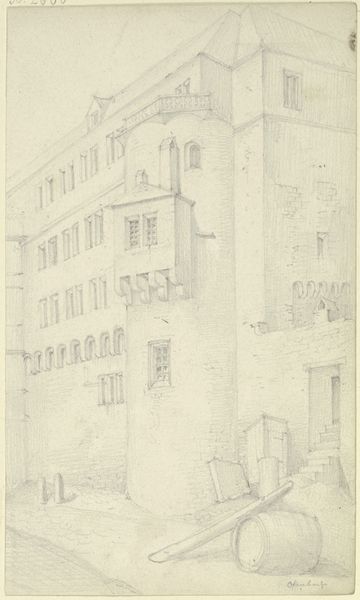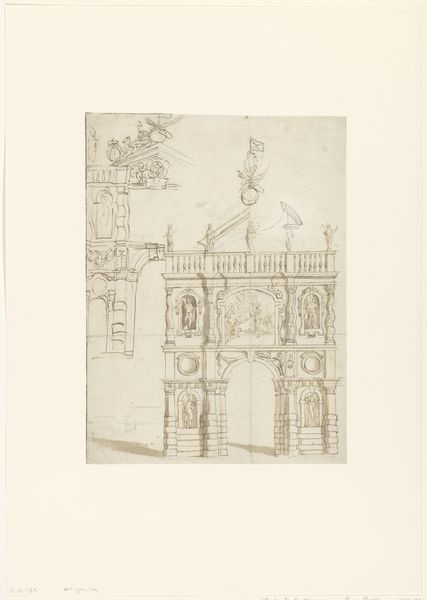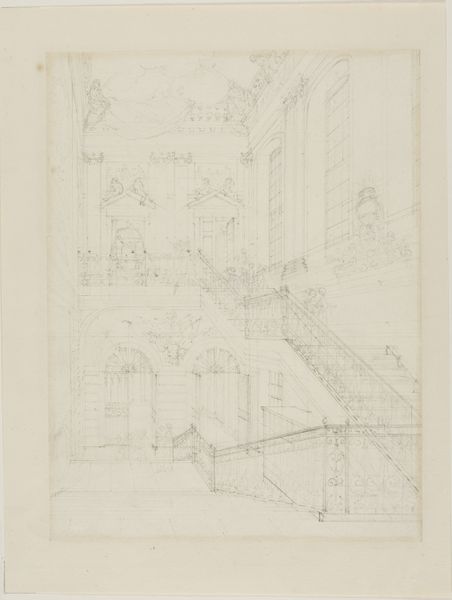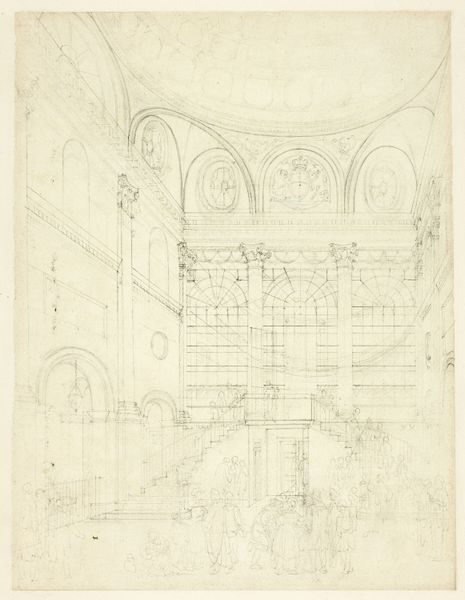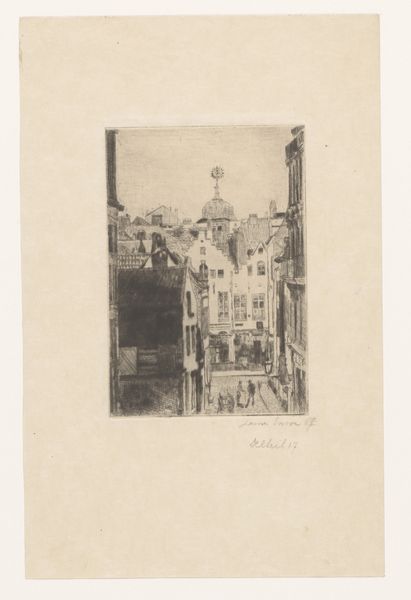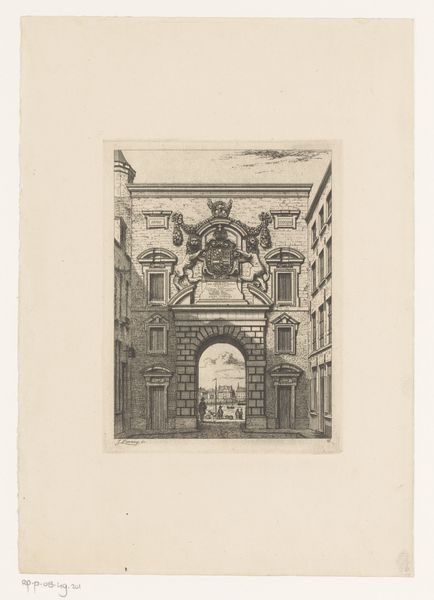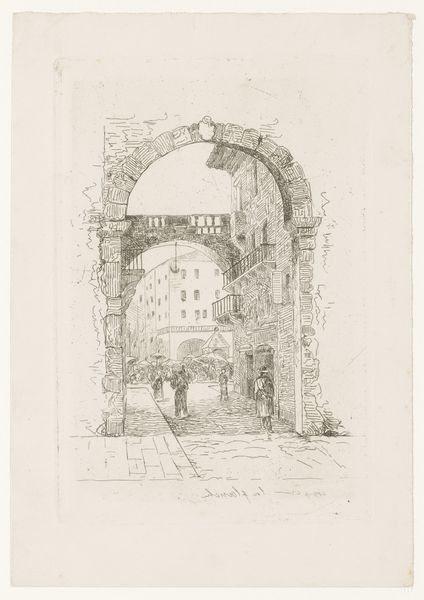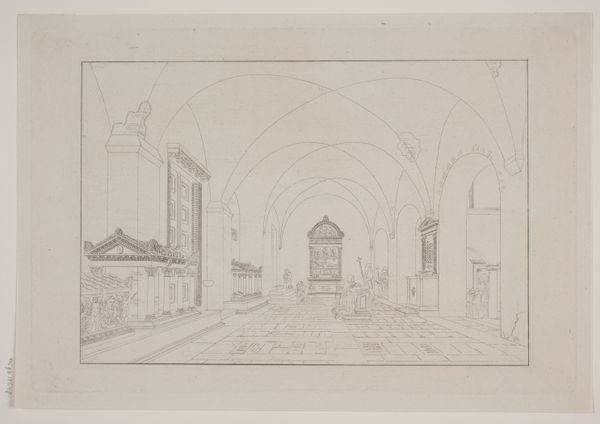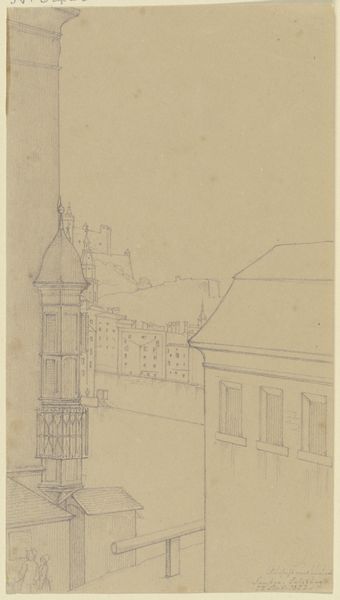
drawing, print, etching, pencil, architecture
#
drawing
#
neoclassicism
# print
#
etching
#
pencil sketch
#
landscape
#
etching
#
form
#
pencil
#
line
#
cityscape
#
architecture
Dimensions: 288 mm (height) x 229 mm (width) (bladmaal), 272 mm (height) x 212 mm (width) (plademaal)
Editor: This is “Fængselsgård i Palazzo del Bargello” or “Prison Courtyard in Palazzo del Bargello” created in 1819 by G.F. Hetsch using pencil and etching. I find it striking how precise and almost sterile the courtyard appears, despite knowing it's a prison. How should we interpret this depiction of confinement? Curator: It's crucial to remember that representations of spaces, especially those of authority like prisons, aren't neutral. Consider the political climate in Europe during the early 19th century. Neoclassicism, the artistic style prominent here, often served as a visual language of order, reason, and civic virtue. How might this choice of style influence our perception of the prison? Editor: It almost makes it look… respectable? I suppose the clean lines and order would suggest justice and control rather than brutality. Curator: Precisely. Think about who would have commissioned or viewed such an image. The drawing could be used to legitimize power by presenting imprisonment as rational and architecturally sound. It’s not simply a drawing; it's a carefully constructed piece of visual propaganda. Editor: So the artist isn't just showing us a prison; they're subtly telling us something about the prevailing attitude towards justice and authority? Curator: Exactly. By depicting the prison courtyard in this way, the artist participates in the discourse surrounding punishment and power. The image helps perpetuate certain social and political values of the time. Editor: I never considered the role art plays in reinforcing societal structures. It’s fascinating to see how even seemingly objective architectural drawings can carry such powerful ideological weight. Curator: It challenges the idea that art is just about aesthetics. The power of images lies in their ability to shape how we see and understand the world. We can't simply appreciate art for its technique.
Comments
No comments
Be the first to comment and join the conversation on the ultimate creative platform.
